brian10x
Well-Known Member
My son, there is ALWAYS refrigerant!Plus power steering fluid if I understand correctly.
Will there be refrigerant?
My son, there is ALWAYS refrigerant!Plus power steering fluid if I understand correctly.
Will there be refrigerant?
Oh yes, it's shared with the AC system, cools the cabin and the battery.Plus power steering fluid if I understand correctly.
Will there be refrigerant?
nothing is maintenance free. but the service intervals are drastically increased. for instance, here is the maintenance recomendations from ford for the Lightning...Are EV drivetrains completely maintenance-free? For how long? A decade and a half, and 250,000 miles, for example?
Can an electric motor make billions of revolutions over many years and never need any service whatsoever?
Doesn't seem likely.
Wouldn't the motor's bearings need to be serviced or something like that?
Aren't there gears involved? Not the differential gears, but the the simple single-speed gear reducer that's in lieu of the transmission in an ICE vehicle. Are those going to be Super Gears that just keep going and going like the Energizer Bunny with zero maintenance for years to come?
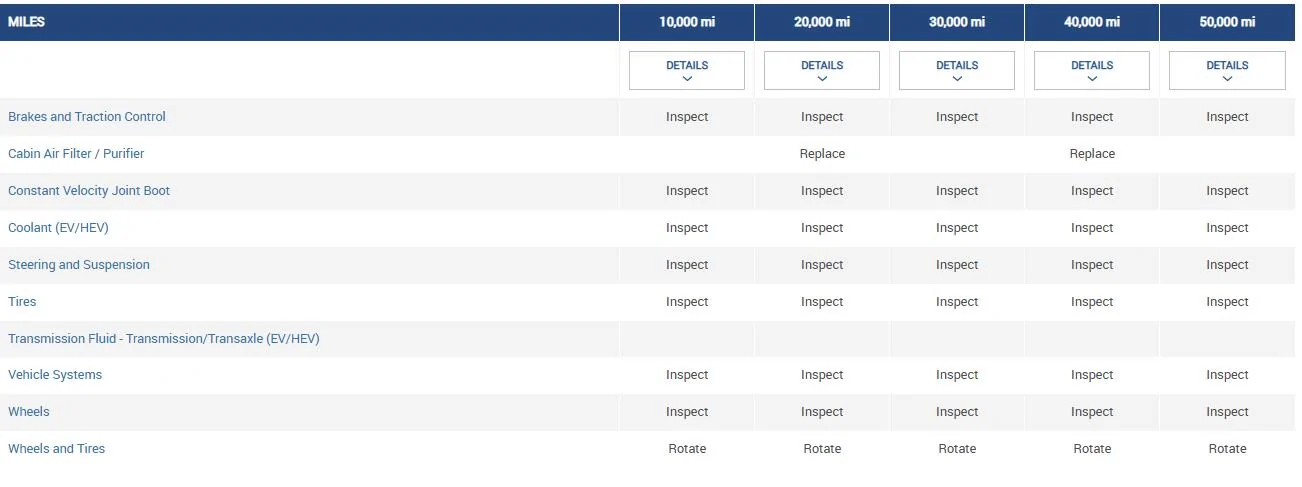
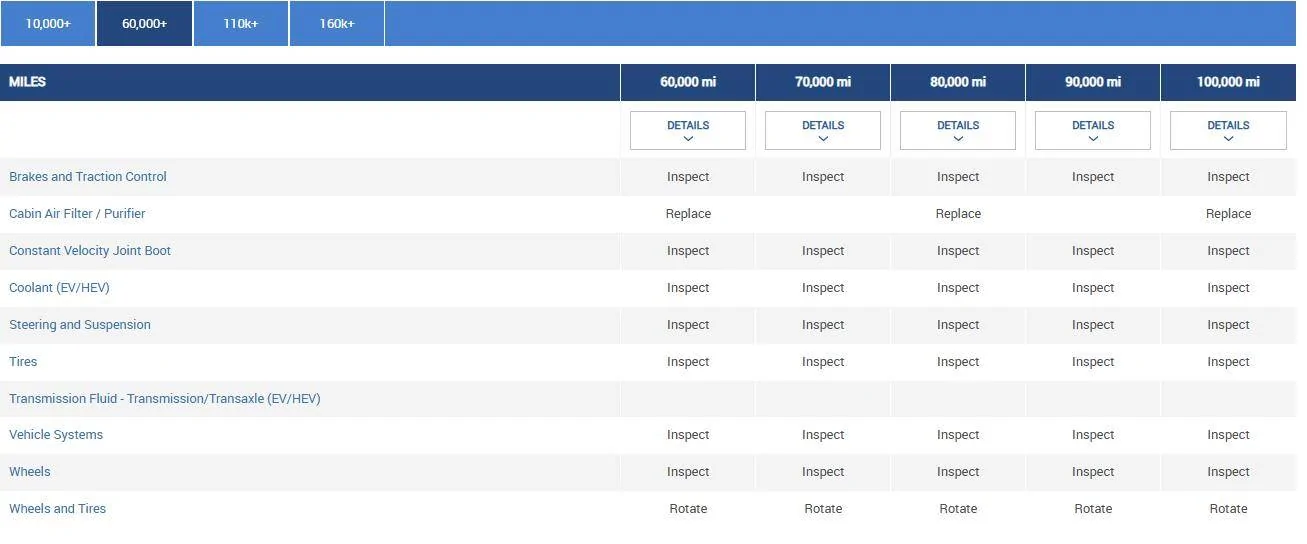
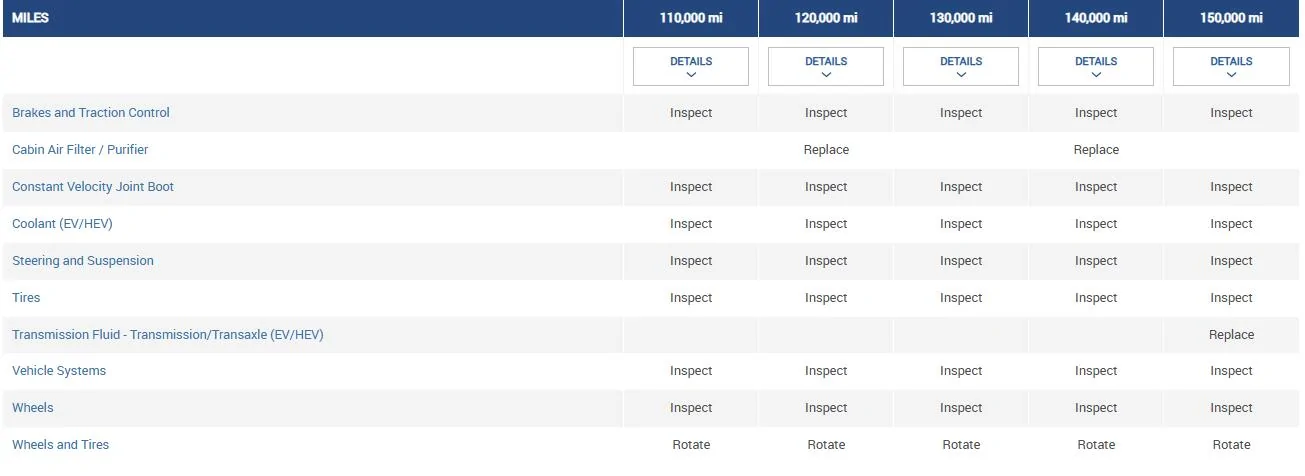
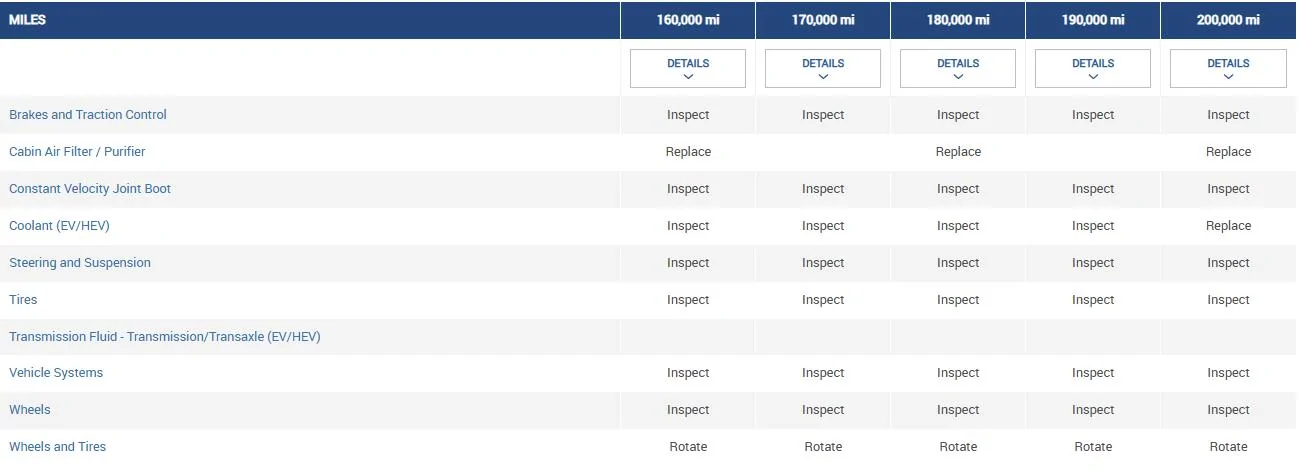
No power steering fluid...Plus power steering fluid if I understand correctly.
Will there be refrigerant?
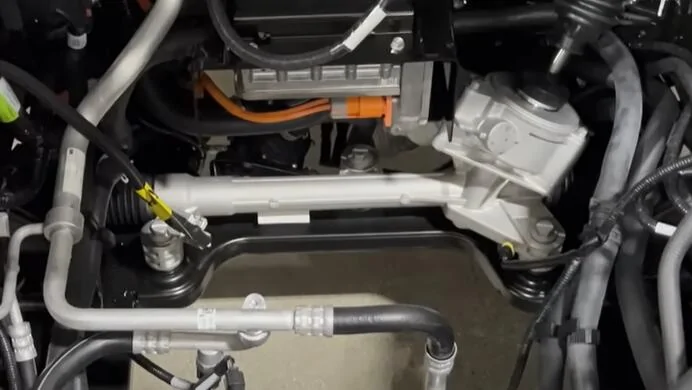
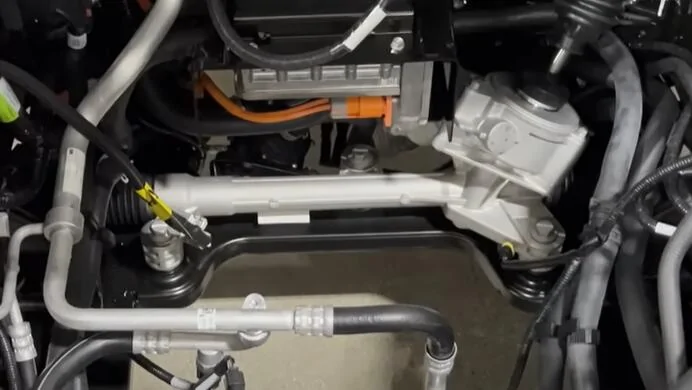
Yes, EVs have moving parts, and thermal considerations. but a comperable ICE counterpart will 10-20 times the amount of moving parts most of them require expensive fluids and filters to be changed several times per year if you plan to keep them moving.An EV cooling/heating system has a whole bunch of moving parts. Multiple electric liquid pumps/compressors and diverter valves. Thermal expansion and contraction (i.e. movement) of connectors and seals and hoses, and plain old thermal cycling of static parts cause wear. Moving electrons around causes heat, lots of heat depending upon the system and use case.
More frequently than "never".Okay, but really how often do such moving parts actually fail?
Maybe-possibly due in part to many EV's, like my Mustang, are really fast and corner better than any performance ICE car I've owned. So there is a tendency to drive the vehicle harder (whee!) If you read other EV forums, you'll see this pointed out. But I think the Slate will be driven less aggressively and not eat tires like you might be reading. And several Mach E owners are now passing 100K with seriously reduced service costs over ICE. Fact. I won't go into the math but my juice cost for my EV is running half what my ICE vehicle fuel cost mile on mile. I charge at home at off-peak rates while sleeping. BTW-my 10K checkup on my Mustang was $100 and included tire rotation, cabin filter, full computer scan and update service along with all the safety checklist stuff. I could have saved $ by replacing cabin filter myself which I'll do from here on out.I'm pretty new to looking into EVs. Why do they tend to go through tires faster?
I would say that moving parts fail quite often, but i am probably biased since I am in the auto repair business and have been for my entire career... Modern cars are value enginered to be as reliable as possibe until the warranty ends.Okay, but really how often do such moving parts actually fail? Modern automobiles are so well engineered and manufactured the moving parts rarely break. I've driven 1.6M total miles in my life spread over eight (8) cars, of four that have gone over 400,000 miles, 256,000 miles, 230,000 miles, and 200,000 miles. Others easily hit 100,000+ miles before I sold them or they were damaged beyond economical repair. Never have I lost and engine or transmission. Hell, my 400,000 mile BMW had a lifetime oil change average of 12,300 miles, with eight changes over 17,000 miles between. The maintenance is not that expensive. Just because the parts move doesn't mean they are any more prone to failure than other non-moving parts of an EV. I'll point to the Ford Mustang Mach E HVB junction box (well the moving contactors fail in it...). Sure, an electric motor drive unit has less rotating parts, it still is subject to heat and thermal expansion and requires proper lubrication (it has an oil pump and gears) and can fail.
The bearings in an automobile that really take shock, and are prone to heat and dirt infiltration damage are wheel bearings, which EVs have. All EVs have axleshafts just like ICEV. Modern ICEV automatic transmissions have oil change requirements between 60,000 and 100,000 miles. The moving parts that really wear on an ICEV are the axles, suspension bushings and struts/shocks, same components an EV has.
Reasonable enough, but 400K with zero failures is the exception, not the rule.I'm going with 400,000 miles as "never".
I think the biggest difference with the reliability of an ICE vs EV is the maintenance. You can get the same reliability from an ICE vehicle with proper maintenance and it may not be that expensive if you perform the maintenance yourself.Okay, but really how often do such moving parts actually fail? Modern automobiles are so well engineered and manufactured the moving parts rarely break. I've driven 1.6M total miles in my life spread over eight (8) cars, of four that have gone over 400,000 miles, 256,000 miles, 230,000 miles, and 200,000 miles. Others easily hit 100,000+ miles before I sold them or they were damaged beyond economical repair. Never have I lost and engine or transmission. Hell, my 400,000 mile BMW had a lifetime oil change average of 12,300 miles, with eight changes over 17,000 miles between. The maintenance is not that expensive. Just because the parts move doesn't mean they are any more prone to failure than other non-moving parts of an EV. I'll point to the Ford Mustang Mach E HVB junction box (well the moving contactors fail in it...). Sure, an electric motor drive unit has less rotating parts, it still is subject to heat and thermal expansion and requires proper lubrication (it has an oil pump and gears) and can fail.
The bearings in an automobile that really take shock, and are prone to heat and dirt infiltration damage are wheel bearings, which EVs have. All EVs have axleshafts just like ICEV. Modern ICEV automatic transmissions have oil change requirements between 60,000 and 100,000 miles. The moving parts that really wear on an ICEV are the axles, suspension bushings and struts/shocks, same components an EV has.
Engines run between 230 to 270 deg. F. Steel and aluminum melt at temperatures 5x to 10X higher than that. Sure, the plain bearings get hot, but they are engineered to get hot and they last for millions of duty cycles.
Discounting manufacturing defects is no different than discounting improperly maintained vehicles. The point is that if there is something that can go wrong it will go wrong. The amount of things that can fail in an EV are drastically less than the amount that can fail in an ICE vehicle. There will be failures though.That's a manufacturing defect that should have been picked up by statistical process control, not an intrinsic attribute of the moving part. Build an EV battery incorrectly and it catches on fire.
I understand what you're saying. I think the reason you are getting such good results is because you're on the ball about maintenance. You're exceptionally (pun intended) good at making cars last.I'm just saying ICEV have a very good track record despite the massive amount of "moving parts".
This.The average person doesn't do proper maintenance and not having to do much, if any, is a plus.